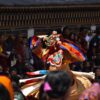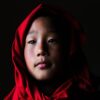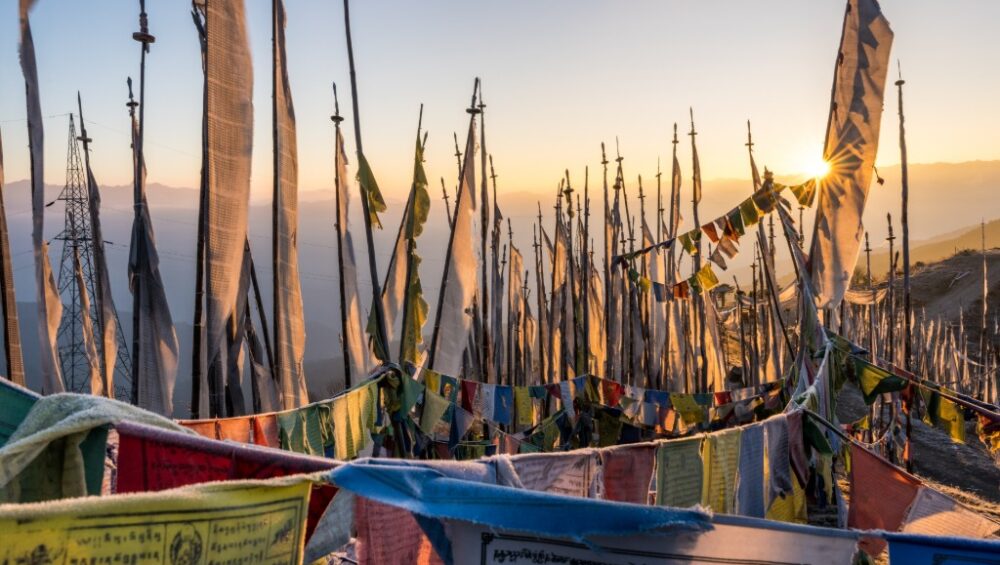
Whether you are looking for a day hike or a gruelling 31 day adventure, Bhutan has it all. Pristine mountain lakes, imposing glaciers and some of the world’s most endangered species await you in the mountainous amphitheatre of the Himalayas.
Let us give you a selection of some of the country’s finest treks. Note: Trekking routes on this website are general guides only and may have inaccuracies. They are not to be used for navigation. Your trek guide is the expert on the route to take.

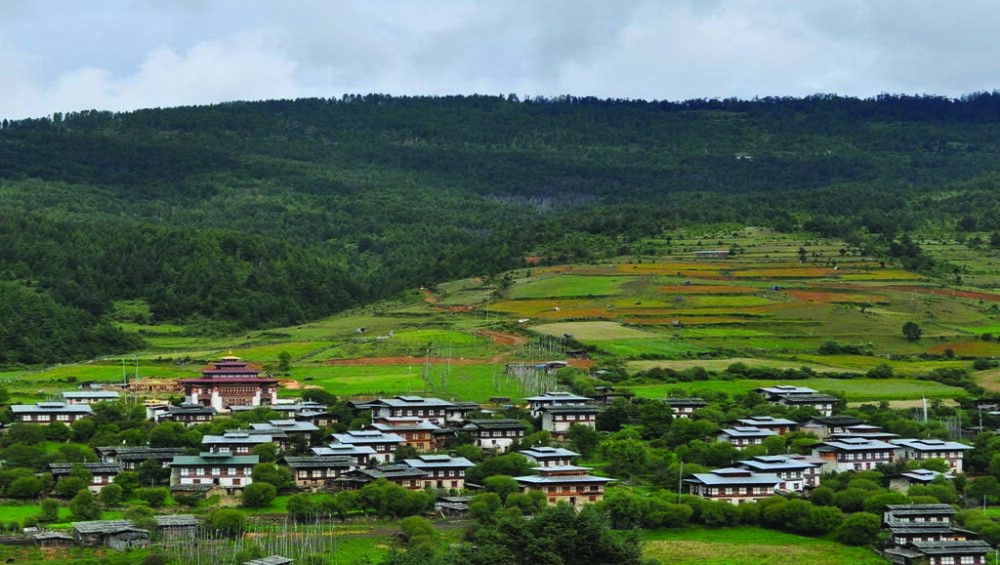
Bumthang Cultural Trek
The Bumthang Cultural Trek is a three-day trek through the cultural heartland of Bhutan, offering a deep immersion into the country’s traditions and landscapes. **Day 1** starts at Toktu Zampa and leads to Ngang Lhakhang, a historic temple nestled in a picturesque valley. **Day 2** continues from Ngang Lhakhang to Tahung, passing through scenic forests and traditional villages, allowing trekkers to experience Bhutanese rural life. **Day 3** takes you from Tahung to Mesithang, concluding the trek in another beautiful valley. The Bumthang Cultural Trek is an enriching journey through Bhutan’s spiritual and cultural heritage.
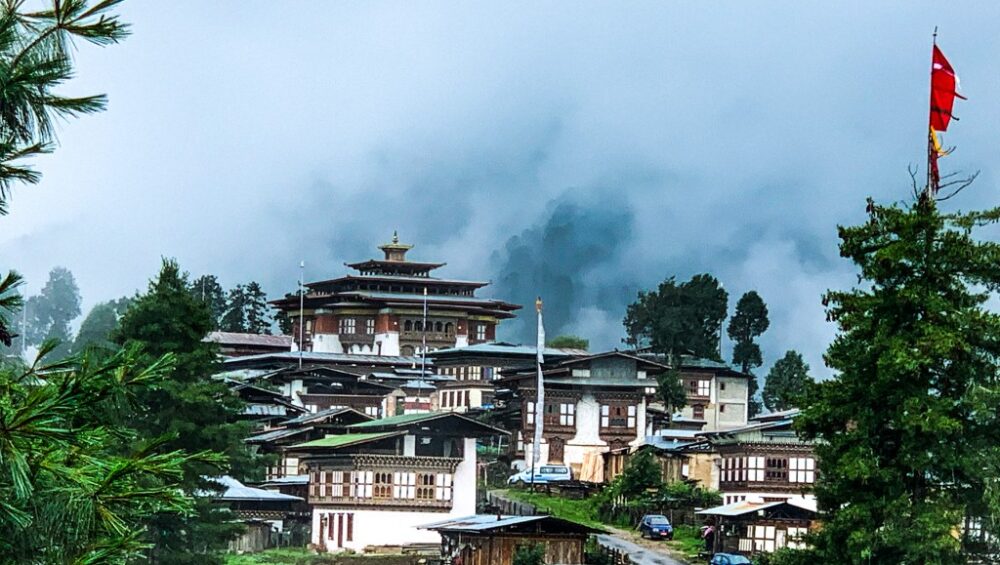
Gangtey Trek
The Gangtey Trek is a three-day journey through the scenic landscapes of Bhutan, beginning in the Phobjikha Valley, renowned for its pristine beauty and black-necked cranes. On **Day 1**, the trek starts from Phobjikha and ascends through pine forests and remote villages to reach Zasa. **Day 2** involves trekking from Zasa to Chorten Karpo, offering breathtaking views of the surrounding mountains and valleys. **Day 3** takes trekkers from Chorten Karpo to Tikke Zampa, where the trek concludes. The Gangtey Trek is a relatively short but rewarding experience, showcasing Bhutan’s natural beauty and cultural richness.
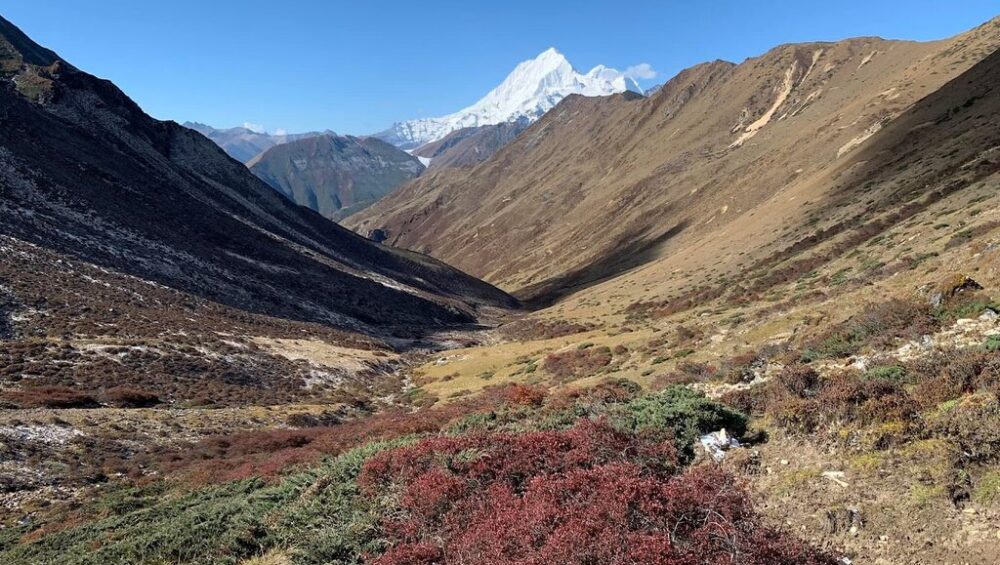
Duer Hot Spring Trek
The Duer Hot Spring Trek is a nine-day adventure in Bhutan, beginning in Duer and leading to the scenic Gorsum. From Gorsum, the trail ascends to Lungsum and then to Tsochenchen, where the trek continues towards the highlight—Duer Tsachu, a natural hot spring. After a day of relaxation at Duer Tsachu, the journey retraces its steps back to Tsochenchen, Lungsum, and Gorsum, finally descending towards Duer Village. The trek offers a blend of stunning landscapes, challenging paths, and the rejuvenating experience of Bhutan’s renowned hot springs.
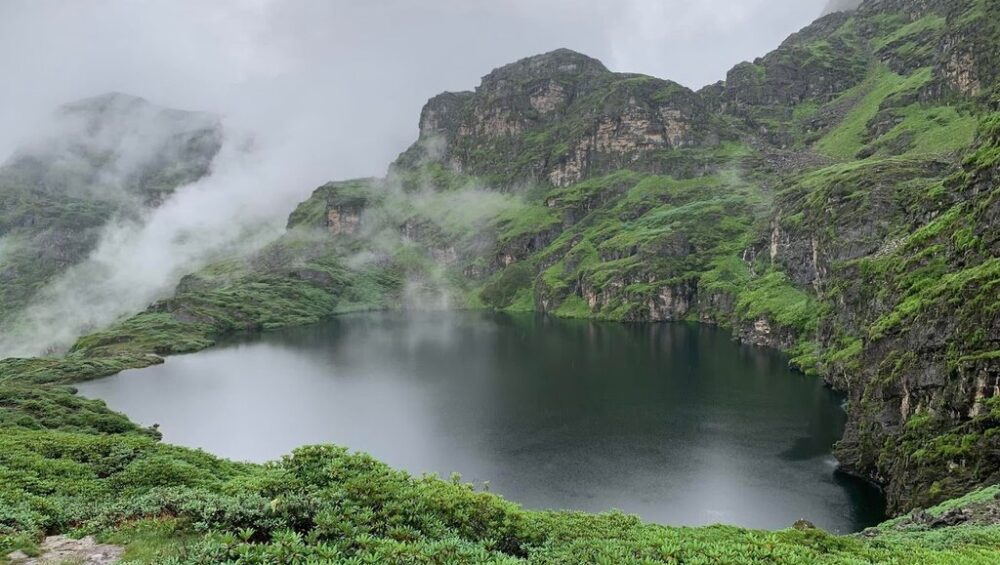
Dagala Thousand Lakes Treks
Duration: 6 days
Total Distance: Approximately 50-60 km
Altitude Range: 2,500 meters to 4,300 meters
Difficulty: Moderate
Best Time to Trek: March to May, September to November
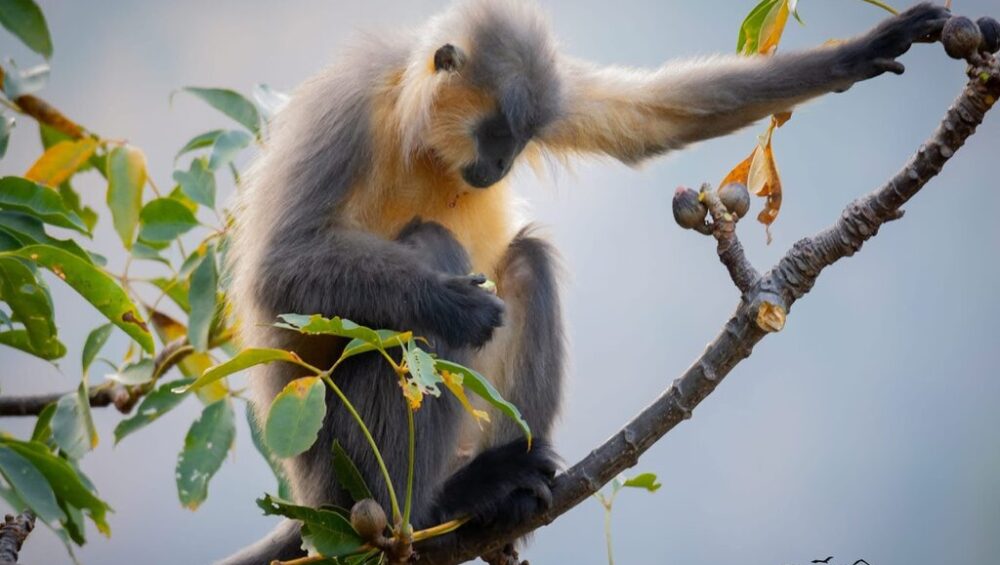
The Nabji Trail
The Nabji Trail is a perfect post-harvest or winter trekking route, open from October to March. This six-day, low-altitude trek (693m/2,274ft to 1,636m/5,367ft) is set in the ecologically rich Jigme Singye Wangchuck National Park in central Bhutan. The park is not only home to diverse wildlife but also several culturally vibrant agricultural villages.
The trail begins at Riotala (1,060m/3,478ft) and ends at Tongtongphey (1,061m/3,481ft), two small villages located along the Trongsa-Zhemgang Road, in the buffer zone on the eastern side of the Mangde Chhu River. Trekkers may encounter the endangered Golden Langur, a rare primate found only in Bhutan and Assam, as well as the Rufous-necked Hornbill. The trail is also a paradise for bird enthusiasts, with sightings of species such as serpent eagles, golden-throated barbets, and yellow-bellied flowerpeckers, alongside more common birds like mynas and blue-fronted redstarts. The region’s flora includes Chir Pine, bamboo, rhododendrons, and wild orchids.
Beyond its natural beauty, the trail is steeped in history. A highlight is the Nabji Temple, which houses a commemorative pillar marking the peace treaty brokered in the 8th century by Guru Rinpoche between King Nauche of India and King Sindu of Bhutan. Evidence of Guru Rinpoche’s presence can be found at various points along the trek.
The final two days of the trek pass through the homeland of the Monpa people, believed to be Bhutan’s earliest settlers. Their traditional villages are scattered across slopes overlooking the Mangde Chhu River, in one of Bhutan’s earliest settlement regions. The Monpas practice a mix of animistic shamanism and Buddhism and are skilled in cane weaving and bamboo crafting, which they use to build homes and create baskets and household items. The term “Monpa” means “people of darkness,” reflecting their historical isolation before the advent of Buddhism in Bhutan
The Nabji Trail plays a key role in supporting park management by raising awareness of environmental and cultural conservation through tourism programs. It also provides socio-economic benefits to local communities while minimizing the negative impacts of tourism. Specific measures have been implemented to ensure tourism supports livelihoods in the area and promotes awareness of natural, environmental, and cultural issues.
This trail has long been used by villagers for commuting between villages. To protect the environment, a waste management system requires tour groups to carry all non-degradable waste out of the park. Waste can be disposed of at an incinerator located at the Park Range Office in Tongtongfey, which serves both tour groups and the local community.
The trail is designed for local communities to manage and provide services independently. These services include community camping sites with basic facilities at Nimshong, Korphu, Kubdra, and Jangbi, or bucket showers and hot stone baths at Nabji. Meals, tea, and other services are also offered. Prices for these services are standardized to avoid misunderstandings between communities, tour operators, and visitors. Each village has a Tourism Management Committee (TMC) appointed by villagers, which oversees services, collects revenue, and manages funds through a Community Development Fund (CDF). Revenue is deposited into a CDF bank account for the community’s benefit.
Income opportunities are shared among villagers on a rotation basis. Community members earn by acting as porters, guides, or cooks, and by selling crafts, vegetables, and agricultural products. Cultural performances are another source of income. A portion of the earnings from these activities is deposited into the CDF, which is used for village development, educational support for children, and maintenance or expansion of tourism facilities. The fund also supports projects that benefit individuals not directly involved in tourism, such as children and the elderly.
Service Rates:
The standard rates for the basic service package and optional services will be shared soon. Revenues from specific services will go directly into the Community Development Fund (CDF). For other services, a percentage of the revenue will go into the CDF, while the rest stays with the local service provider.
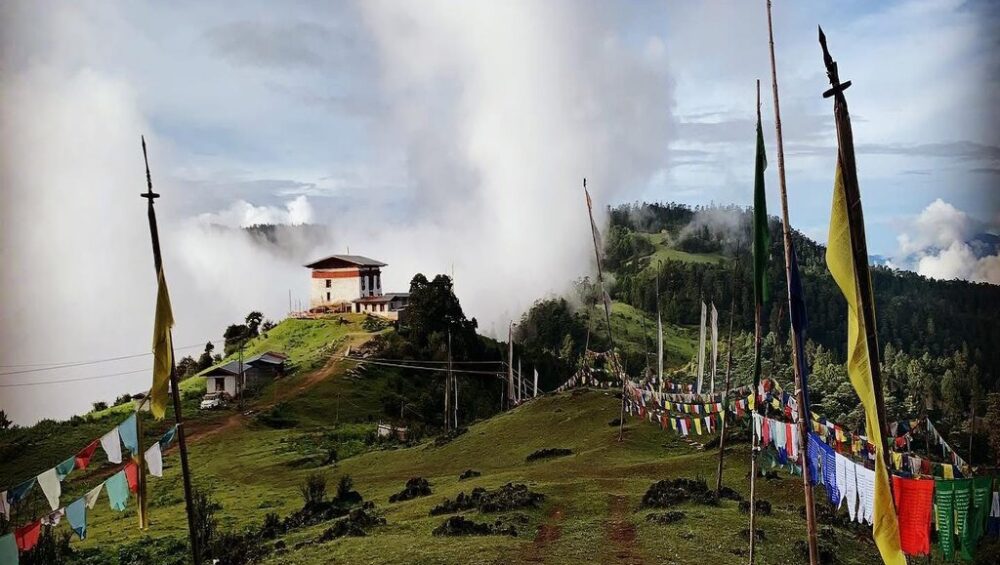
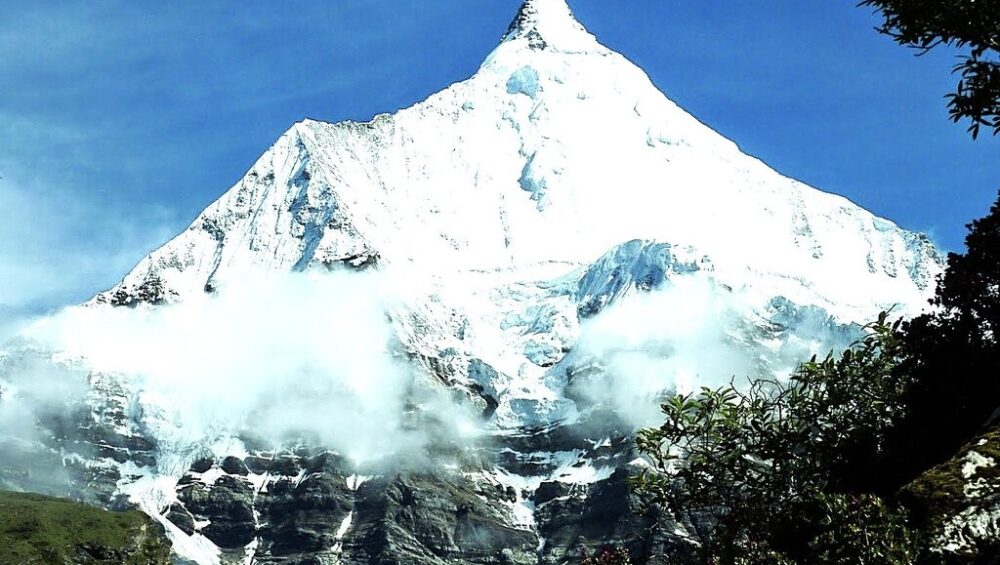
Jomolhari Trek
The Jumolhari Trek is Bhutan’s most popular trekking route, leading adventurers to the base of Mount Jumolhari, a sacred peak on the border with Tibet, China. Along the way, trekkers pass through breathtaking landscapes, encountering diverse wildlife and unique plant life. This journey offers an unforgettable experience, with changing terrains and stunning natural beauty at every turn. The most rewarding moment comes upon reaching Jangothang Base Camp, where the majestic Mount Jumolhari stands tall, offering a spectacular and awe-inspiring view.

Merak Sakteng Trek
This is Bhutan’s newest trek, taking you through the remote and scenic Merak and Sakteng regions, home to the Brokpa people, a semi-nomadic community with a unique culture. These villages were once isolated from the rest of Bhutan for centuries, preserving their ancient traditions, language, and way of life. The trek offers a rare chance to experience their distinct customs, yak-herding lifestyle, and vibrant festivals, all set against a backdrop of pristine landscapes, high mountain passes, and rich biodiversity within the Sakteng Wildlife Sanctuary.

Laya Gasa Trek
The Laya Gasa Trek is a 18-days adventure through Bhutan’s stunning and diverse landscapes, starting from Gunitsawa Village and ending in Gasa. Trekkers will pass through lush forests, high mountain passes, and remote villages, experiencing the natural beauty and rich culture of Bhutan. Along the way, they will visit Sharna Zampa, Thangthangkha, and Jangothang, where breathtaking views of Mount Jomolhari await. The trek also takes them through Lingshi, Chebisa, and Laya, where they can experience Bhutanese traditions and warm hospitality. The journey concludes in Gasa, known for its soothing hot springs and historic dzong, offering a well-earned rest after an exciting and challenging trek.

